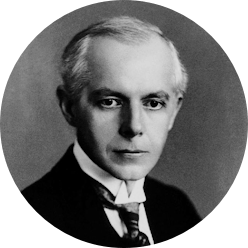
Béla Bartók
25 de marzo de 1881 - Nagyszentmiklos (Hungary) — 26 de septiembre de 1945 - New York (USA)
Acerca de
Béla Bartók, the great master in 20th century modernity
The great master in 20th century modernity, Béla Bartók, began music with his mother when he was six. A child prodigy, he first made himself known as a pianist playing Franz Liszt’s Sonata in B in 1901. Strongly influenced by Richard Strauss and Richard Wagner, his first compositions conducted by Hans Richter, were the symphonic poems where late Romanticism counterbalanced national folklore.
Bartók between classical music and popular music
Béla Bartók wrote when he met the composer Zoltán Kodály: “Each of our popular tunes is a true model of artistic perfection.” They were both very enthusiastic about Claude Debussy’s music and covered the Hungarian countryside making gramophone recordings of more than 10 000 Hungarian, Romanian, Ukrainian, Bulgarian and Turkish melodies. In 1918, the first production of his opera Bluebeard’s Castle was the first milestone towards the acknowledgement of a more personal music of luscious colours and symbolist evocation.
While avoiding simplistic folklore, Béla Bartók’s imagination integrated national melodies with rigour and precision. He composed masterpieces like the violent The Miraculous Mandarin (1919) or Music for Strings, Percussion and Celesta, (1936), a piece of rare formal perfection.
Bartók, a complex work
The third prince of modernity along with Igor Stravinsky and Arnold Schoenberg, Béla Bartók never abandoned lyricism, dramatic force or wild rhythms in his music. In 1940, fleeing from the Nazi regime, he settled in the United States and lived precariously giving conferences and concerts for two pianos with his wife. Failing to achieve the success he had hoped for, tired and poverty-stricken, he was helped by Yehudi Menuhin and Sergei Koussevitzy who commissioned the Concerto for Orchestra. Exhausted, he died at the age of 64. Carved in crystal to the very end, his music remains exceptional and complex. It would be an object of fascination for generations to come.

